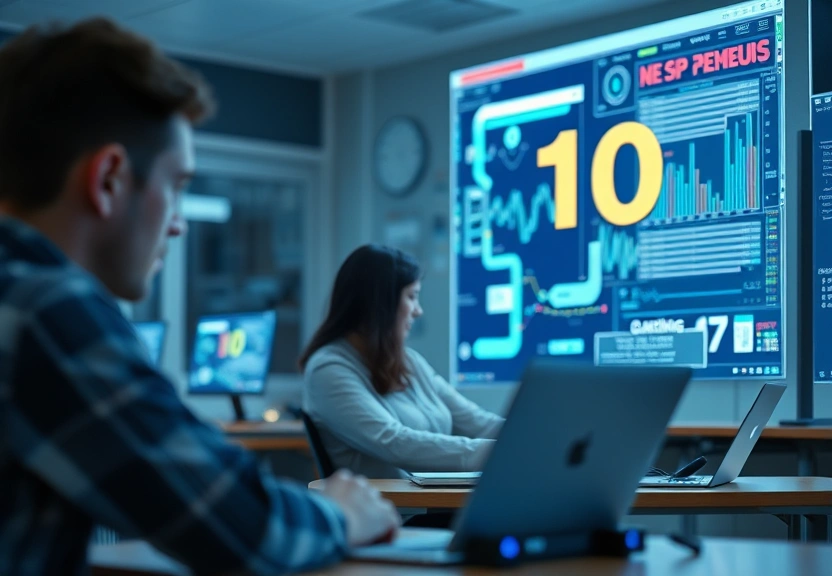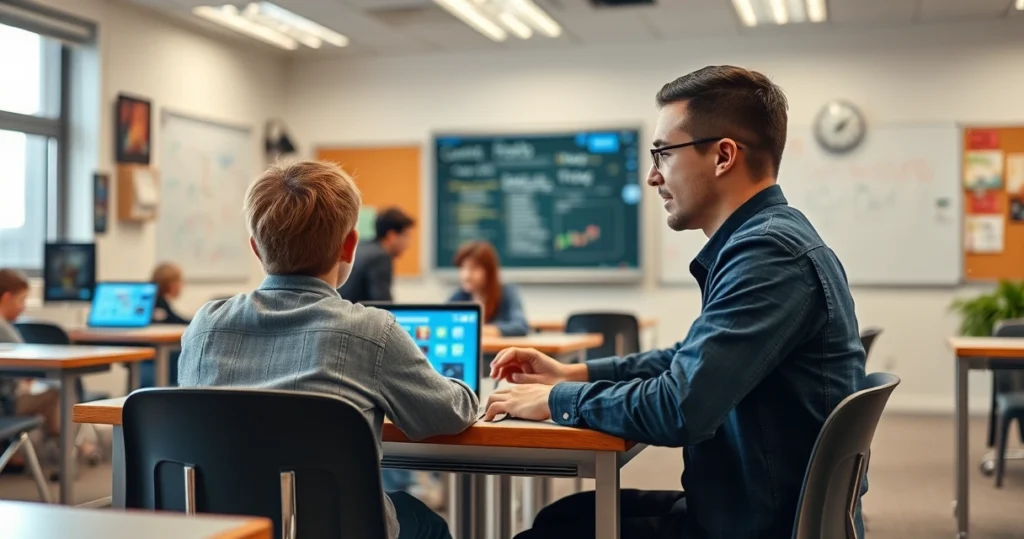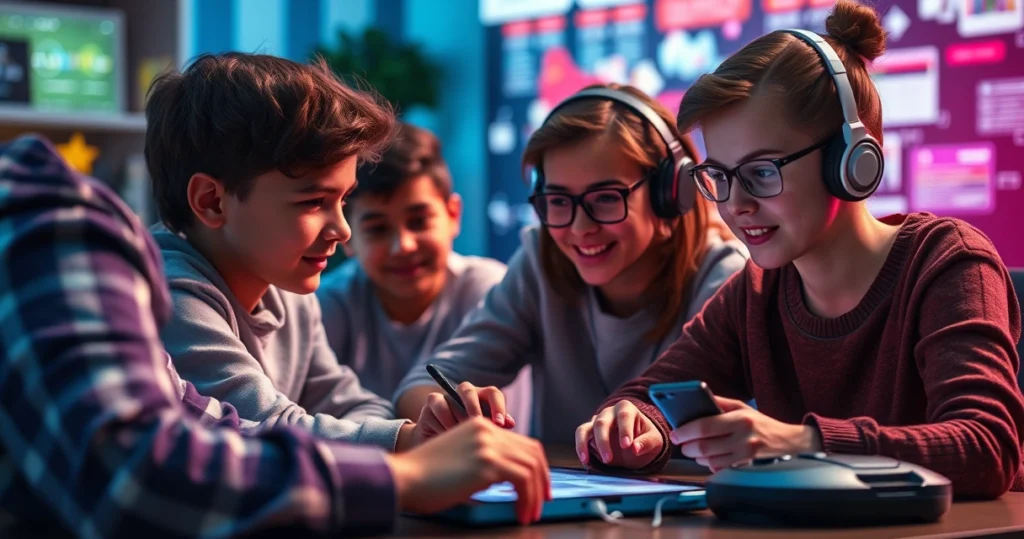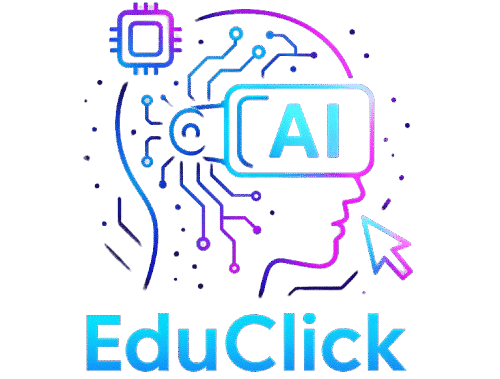Top 10 EdTech Solutions Revolutionizing Classrooms in 2025
Imagine a world where your child—or perhaps even you—approaches learning with excitement and anticipation. Picture classrooms not defined by physical walls but by limitless opportunities for exploration and understanding. In 2025, this vision isn’t a distant future; it’s a reality unfolding before our eyes. As educators and learners, we find ourselves at the heart of this transformation, where technology continues to redefine the educational landscape.

Remember those times when learning felt like a solitary journey, confined to textbooks and lectures? Now, juxtapose that with today’s dynamic, interactive learning environments, powered by cutting-edge EdTech solutions. Whether you’re a teacher looking to inspire or a student eager to explore, the integration of educational technology offers endless possibilities. It’s more than just about using new tools; it’s about embracing a new mindset that prioritizes engagement, accessibility, and adaptability.
As you navigate the possibilities that EdTech offers, you’re not just witnessing a shift but becoming an active participant in a worldwide educational renaissance. This journey is personal for many, as it is for you. It’s about your experience, your adaptability, and how these revolutionary tools can better cater to individual learning styles, making education more inclusive and effective. Together, let’s explore the top ten EdTech solutions that are not just changing classrooms but are also reshaping futures.
1. Virtual Reality (VR) and Augmented Reality (AR) in Education
Immersive Learning Experiences
Virtual Reality and Augmented Reality are transforming how students engage with learning materials. By creating immersive experiences, these technologies allow you to step inside historical events or explore the human body in 3D. The hands-on approach helps in retaining complex information effectively.
- History students can “walk” through ancient civilizations.
- Biology classes can delve into cellular structures.
Enhanced Engagement and Motivation
Imagine the excitement of being able to virtually dissect a frog without any mess. This level of interaction boosts student enthusiasm and motivation. The tactile and visual stimulants cater to diverse learning preferences, making it easier for students to grasp difficult concepts.
- Interactive lessons increase participation.
- Visual aids enhance understanding.
Cost-Effective Solutions
While VR and AR technologies might seem expensive, their long-term benefits and cost-effectiveness are undeniable. Schools can save on physical materials like lab equipment or travel expenses for field trips, providing the same experiences through virtual simulations.
Examples include virtual lab experiments and historical site visits.
2. Artificial Intelligence (AI) in Personalized Learning
Adaptive Learning Platforms
Artificial Intelligence is at the forefront of personalizing education. Adaptive learning platforms use AI to assess your strengths and weaknesses, tailoring lessons to meet your individual needs. This personalized approach ensures that you learn at your own pace.
- Programs like DreamBox and Smart Sparrow adjust difficulty based on performance.
- Customized feedback helps in targeted improvement.
AI-Powered Assistants
Virtual assistants, powered by AI, are transforming classrooms by providing real-time answers and assistance. Students can ask questions and receive instant feedback, promoting independent learning.
- Chatbots offer 24/7 learning support.
- Voice-activated assistants facilitate hands-free interaction.
Data-Driven Insights
With AI, educators gain access to data-driven insights about student progress. This information helps tailor curriculums and identify students who may need additional support, ensuring no one falls behind.
For instance, AI analytics can highlight areas needing more focus.
🎥 Vídeo complementar sobre o tópico
3. Gamification as a Learning Tool
Making Learning Fun
Gamification incorporates game design elements into learning environments, making education fun and engaging. By turning lessons into games, students find learning less daunting and more appealing.
- Points and rewards systems motivate progress.
- Levels and challenges stimulate cognitive skills.
Improving Retention Rates
When students enjoy what they’re learning, they retain information more effectively. Gamified learning tools harness this principle, ensuring that knowledge sticks.
- Repetitive game tasks help in memory retention.
- Story-based learning aids in contextual understanding.
Encouraging Collaboration
Educational games often require teamwork, fostering collaboration and communication skills among students. This social aspect of gaming helps cultivate a sense of community and belonging in virtual classrooms.
Examples include multiplayer educational games and group challenges.
4. Remote Learning Strategies for Inclusive Education
Access to Global Resources
Remote learning strategies have broadened access to educational resources worldwide. With internet access, students can learn from top educators and institutions, regardless of geographical location.
- Online courses from universities around the globe.
- Webinars and live lectures from industry experts.
Flexibility and Convenience
Online education offers unparalleled flexibility. Whether you’re juggling a job, family commitments, or other responsibilities, remote learning enables you to study at your convenience.
- Self-paced courses allow for time management.
- Recorded lectures reduce time zone constraints.
Tools for Diverse Learning Needs
Remote learning platforms provide tools to cater to students with diverse learning needs. Features like subtitles, screen readers, and adjustable playback speeds ensure that everyone can learn effectively.
For example, platforms might offer transcription services and customizable interfaces.
5. Collaborative Tools Fostering Teamwork
Real-Time Collaboration Platforms
Tools like Google Workspace and Microsoft Teams enable real-time collaboration, allowing students and educators to work together seamlessly, no matter where they are.
- Shared documents for group projects.
- Instant messaging for quick communication.
Virtual Whiteboards and Brainstorming
Virtual whiteboards are a staple in modern classrooms, providing space for brainstorming and ideation. Students can share and develop ideas collaboratively, enhancing creativity and problem-solving skills.
- Tools like Miro and Jamboard for interactive sessions.
- Visual aids that enhance conceptual understanding.
Project Management Platforms
Project management tools like Trello and Asana keep group projects organized and on track. Students learn valuable skills in planning, execution, and collaboration, preparing them for future professional environments.
These platforms offer task assignments, deadline tracking, and progress monitoring features.

FAQs
What are the key benefits of using VR and AR in education?
VR and AR provide immersive learning experiences that make complex subjects more tangible and engaging. They help in visualizing concepts, increasing student engagement and motivation, and offering cost-effective alternatives to traditional field trips and lab resources. By experiencing lessons firsthand, students can grasp difficult topics more effectively.
How does AI personalize the learning experience?
AI personalizes education through adaptive learning platforms that adjust to individual learning styles and paces. These platforms analyze student performance data to tailor lessons, ensuring that learners receive the right level of challenge. AI also provides personalized feedback and recommendations to support individual learning paths.
Why is gamification effective in education?
Gamification leverages students’ natural love for games to encourage learning. By incorporating game mechanics like points, levels, and rewards into educational content, it makes learning more engaging and enjoyable. This approach also promotes active participation, enhances knowledge retention, and improves critical thinking and problem-solving skills.
What makes remote learning strategies important in 2025?
Remote learning strategies are crucial as they provide accessibility to quality education for students worldwide. They offer flexibility for those balancing other responsibilities, such as work or family. Additionally, these strategies include tools that support diverse learning needs, ensuring an inclusive learning environment that caters to all students.
How do collaborative tools improve learning outcomes?
Collaborative tools enhance learning by fostering teamwork and communication among students. They enable real-time interaction, allowing students to work together efficiently, share ideas, and develop solutions collectively. This collaborative environment builds essential skills like leadership, negotiation, and problem-solving, essential for personal and professional growth.
Can EdTech solutions be integrated into traditional classroom settings?
Yes, EdTech solutions can complement traditional teaching methods by providing additional resources and tools. For instance, teachers might use VR to simulate real-world experiences or AI-driven platforms to offer personalized learning paths. The integration of technology enhances the overall learning experience by making it more interactive and engaging.
Are there cost implications for implementing EdTech solutions?
While initial setup costs for EdTech solutions might be high, the long-term benefits often outweigh these expenses. Schools can save on physical resources, reduce administrative burdens, and improve educational outcomes. Many EdTech providers also offer scalable solutions that cater to varying budgets, making them accessible to a wide range of educational institutions.
What role does student data play in EdTech solutions?
Student data is vital for optimizing EdTech solutions. It helps platforms tailor learning experiences to individual needs, track progress, and identify areas requiring additional support. However, it’s important that this data is handled responsibly, ensuring student privacy and compliance with data protection regulations.
How do EdTech solutions support teachers?
EdTech solutions support teachers by automating administrative tasks, providing insights into student performance, and offering diverse teaching resources. This support allows teachers to focus more on delivering quality education and nurturing student development. Technology also facilitates professional development by providing access to training and collaborative opportunities with peers.
Conclusion
As we look forward to 2025 and beyond, the role of technology in education continues to expand and evolve. The EdTech solutions discussed here represent only the beginning of what’s possible in reshaping classroom dynamics. By embracing these innovative tools, you’re not just enhancing the learning experience but also preparing students for a future where technology plays an integral role in every aspect of life.
The journey towards fully integrated EdTech solutions may require initial investments in time, energy, and resources, but the payoff is undeniably worth it. With the potential to reach and engage students like never before, these technologies are setting the stage for a revolution in education where every learner’s needs can be met more effectively.
As you implement these strategies, remember that the heart of education lies in fostering curiosity and a love for learning. Technology is merely the enabler, and your commitment as an educator or learner is what truly brings these innovations to life. Embrace these changes, and you’ll find that the future of education is not just exciting—it’s also incredibly promising.
Your role is crucial in this transformation. Stay informed, be adaptable, and continue to seek out innovative solutions that can make a meaningful difference in educational outcomes. The classroom of 2025 is a place of possibility, and you have the power to shape its potential.
Key Takeaways
- The integration of VR and AR provides immersive experiential learning, enhancing student engagement.
- AI-driven personalized learning platforms cater to the unique needs of each student, optimizing educational outcomes.
- Gamification transforms learning into an enjoyable and interactive experience, promoting retention and collaboration.
- Remote learning strategies offer unprecedented access to global resources and flexible, inclusive education.
- Collaborative tools foster teamwork and communication, crucial skills for future personal and professional success.




